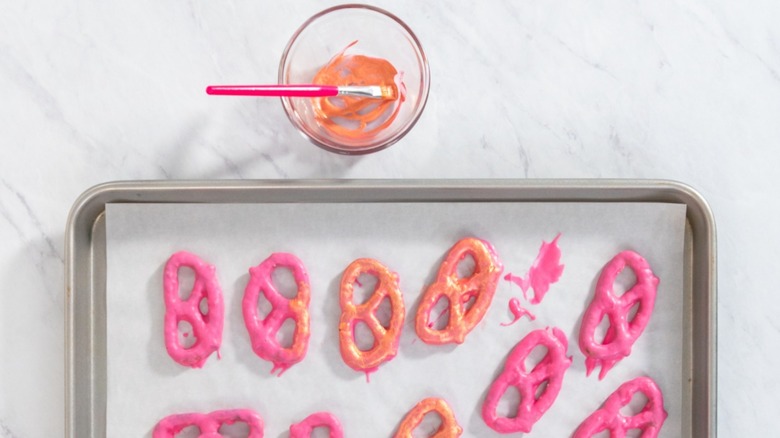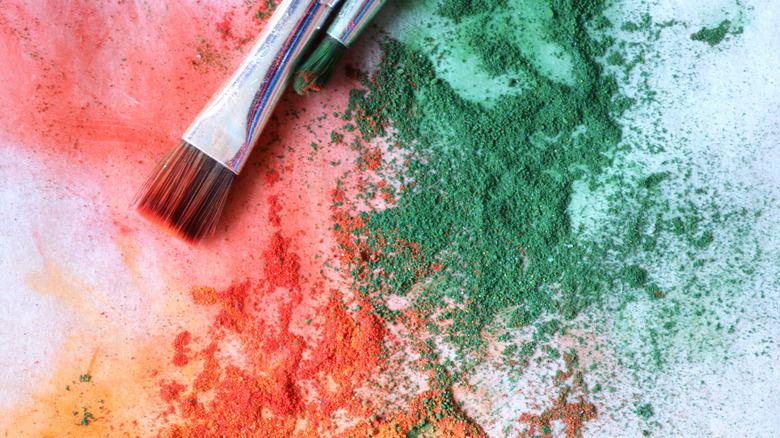Why You Should Always Read The Label When Buying Luster Dust
Our affinity for things that sparkle and gleam is one that knows no bounds. Whether our pull towards shiny things is based on its correlation to wealth, or an evolutionary response as described by Fast Company, the appeal of all things glittering only seems to intensify over time, which might explain why we've transformed what was once meant solely for admiration into something edible. That's right, thanks to the addition of luster dust, we can now eat glitzy versions of our favorite foods. Exciting as that may sound, before stockpiling on the brilliant ingredient, you might want to double-check the labels first.
Rather than add taste, Magic Sparkles explains that luster dust is strictly for elevating aesthetics. With just a sprinkle of the magic ingredient, drab cakes, and confections can be transformed into dazzling displays that excite the eyes. Available in a variety of colors and finishes, the Ultimate Baker shares that these decorative powders can be applied with a dry brush or mixed with an alcohol-based extract and painted on goodies for heightened levels of luxe.
But, while these shimmering powders can be found quite easily in baking supply stores and even craft stores, their safety has recently been called into question (via Forbes), prompting many to reconsider adding sparkle to their culinary creations.
Non-toxic doesn't necessarily mean edible
Not all luster dust is created equal. In fact, ingredients can vary depending on the brand and even the color of the powder. Based on the fact that some glitters used to decorate foodstuffs can contain non-edible materials and even trace metals, the CDC recommends always carefully reading the label.
First and foremost, it's important to remember that just because something is labeled "non-toxic" that doesn't mean it's intended for consumption, notes Eater. Instead, it simply means that it won't wreak any significant havoc on the body when consumed. So, while edible glitters are often made from actual ingredients such as sugar, cornstarch, and food coloring in addition to pearly mica pigments, FoodDive explains that non-toxic glitters are instead often made from plastics. We know, it's a less-than-appetizing reality.
That said, to be considered completely edible, the FDA explains that luster dust should include a complete list of ingredients on the container along with a label stating that it's "edible," "FDA approved" or even "food grade." Should luster dust be labeled as "non-toxic" and fail to provide an ingredient list, it's wise to assume that the glitter is intended for decorative use rather than consumption.

